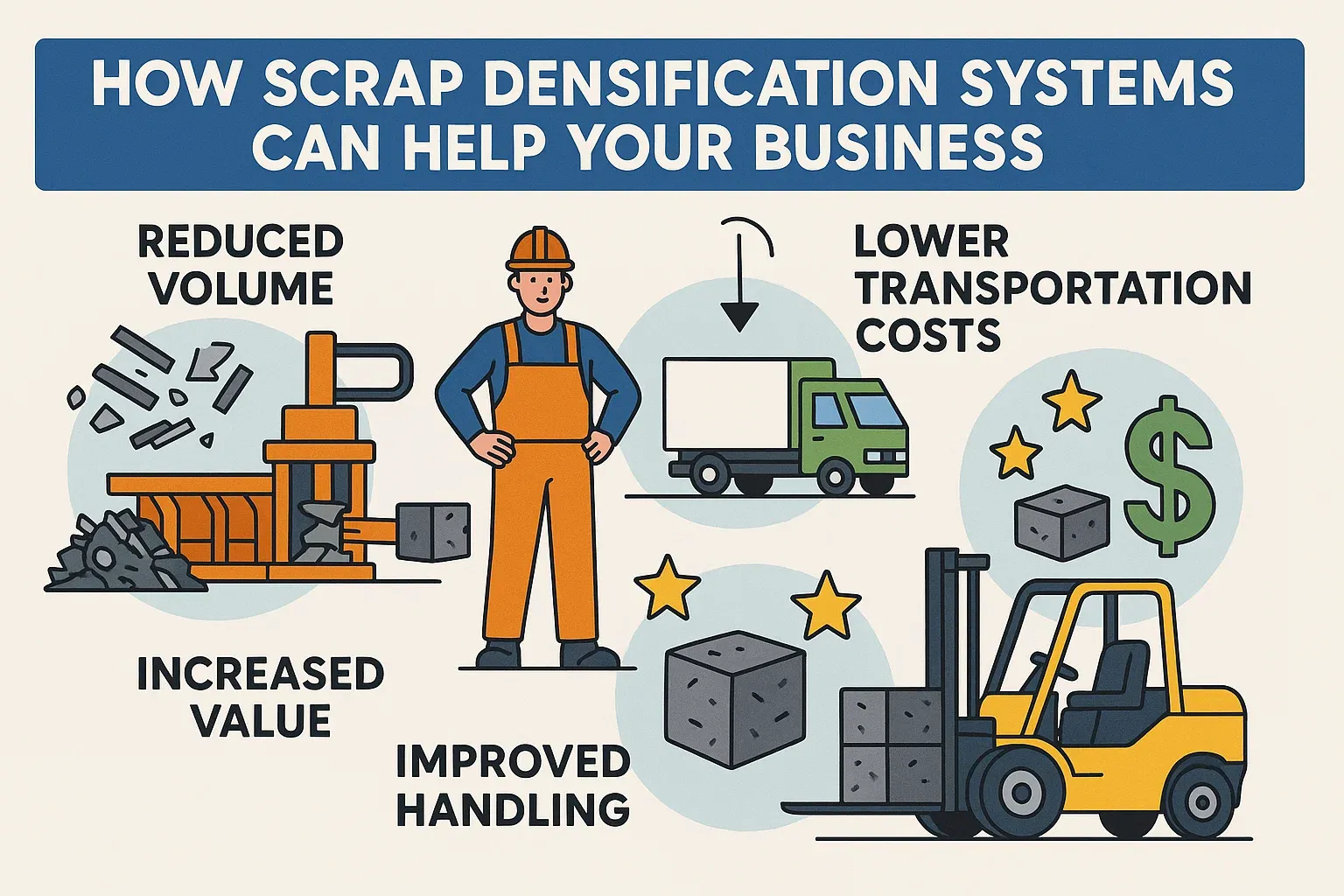Scrap densification systems play a vital role in improving operational efficiency and profitability within recycling and manufacturing industries. For businesses handling significant amounts of scrap materials such as plastics, foam, metal chips, or paper waste, implementing a densification system can be transformative.
What is a Scrap Densification System?
A scrap densification system is industrial equipment designed to compact or compress scrap materials into denser forms, typically pellets, briquettes, or blocks. This reduces volume, simplifies handling, and significantly enhances the efficiency of subsequent recycling or disposal processes.
Key Benefits of Scrap Densification Systems
Enhanced Space Efficiency
One of the most immediate advantages of densification is the substantial reduction in storage space required. Loose scrap materials are bulky and cumbersome to store. By compressing these materials, businesses can reclaim valuable workspace, streamline storage logistics, and reduce warehouse congestion.
Cost Savings on Transportation
Transportation costs can significantly impact profitability. Densification systems compress scrap into denser forms, dramatically reducing transportation volume and allowing for heavier, more cost-effective loads. This means fewer trips, lower fuel costs, and reduced environmental footprint.
Improved Material Handling
Compressed materials, such as briquettes or pellets, are easier and safer to handle compared to loose scrap. They pose fewer risks to employees, simplify mechanical handling processes, and enhance overall operational safety.
Increased Recycling Revenue
Densified scrap typically commands higher market values than loose material due to its increased density and ease of handling for recyclers. Businesses can negotiate better pricing and improve their profit margins from selling scrap materials.
Environmental Sustainability
Implementing a scrap densification system enhances sustainability initiatives by minimizing waste volumes, reducing landfill usage, and decreasing transportation-related emissions. Businesses committed to green initiatives can significantly benefit from integrating densification into their recycling operations.
Workflow of a Typical Densification System
Here’s a simplified workflow:
- Material Feeding: Loose scrap materials are fed into the densification unit via conveyors or manual input.
- Compaction: Materials are compressed under high pressure.
- Cooling (if necessary): Some systems may include cooling stages to solidify materials quickly.
- Output: Compressed briquettes, pellets, or blocks exit the system for storage or transport.
Choosing the Right Scrap Densification System
Selecting the right system involves assessing your specific business needs:
- Material Type: Systems are designed differently for plastics, metals, or foam. Choose equipment optimized for your primary scrap type.
- Capacity Requirements: Match the equipment’s throughput to your daily scrap output to maintain efficiency.
- Integration Ease: Consider systems compatible with existing recycling or manufacturing lines for minimal disruption.
- Operational Costs: Evaluate energy consumption, maintenance requirements, and total cost of ownership.
Performance Comparison: Loose Scrap vs. Densified Scrap
| Factor | Loose Scrap | Densified Scrap |
|---|---|---|
| Storage Space | High | Low |
| Transportation Cost | High | Low |
| Handling Difficulty | High | Low |
| Market Value | Low to Moderate | High |
| Environmental Impact | Higher | Lower |
Conclusion
Investing in a scrap densification system provides tangible operational, economic, and environmental benefits. For businesses handling considerable amounts of scrap material, this technology is a strategic step toward greater efficiency, sustainability, and profitability.



